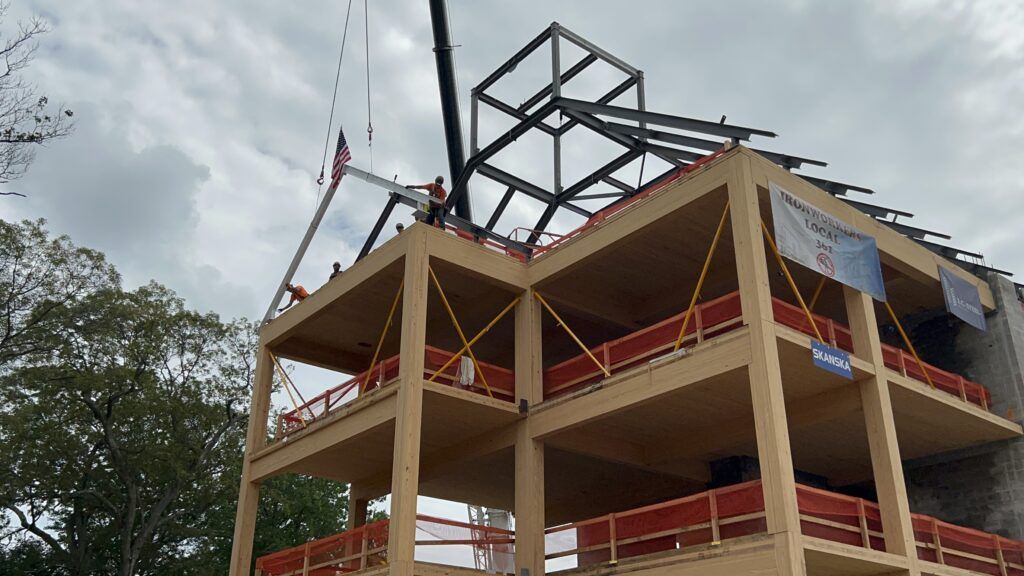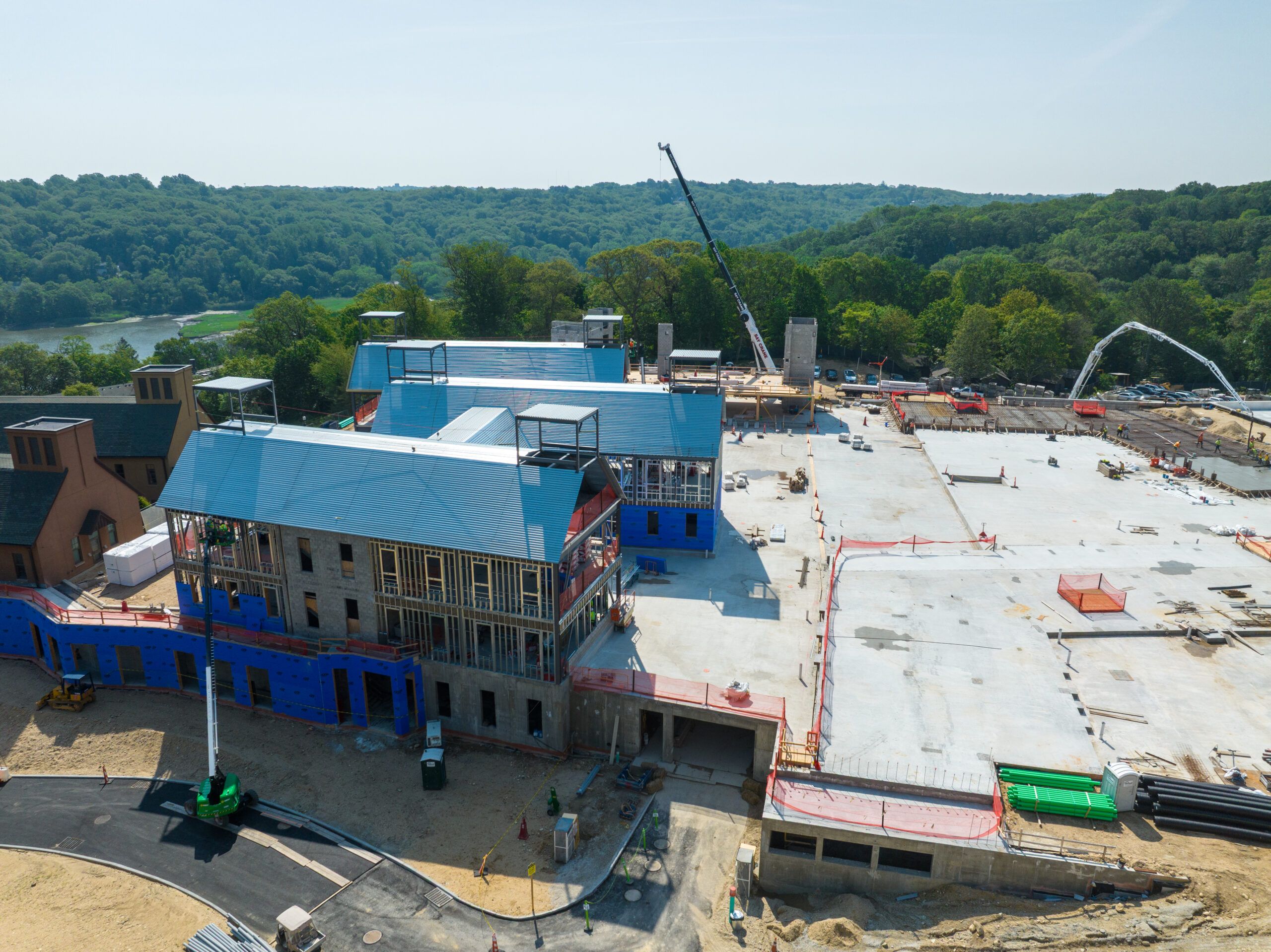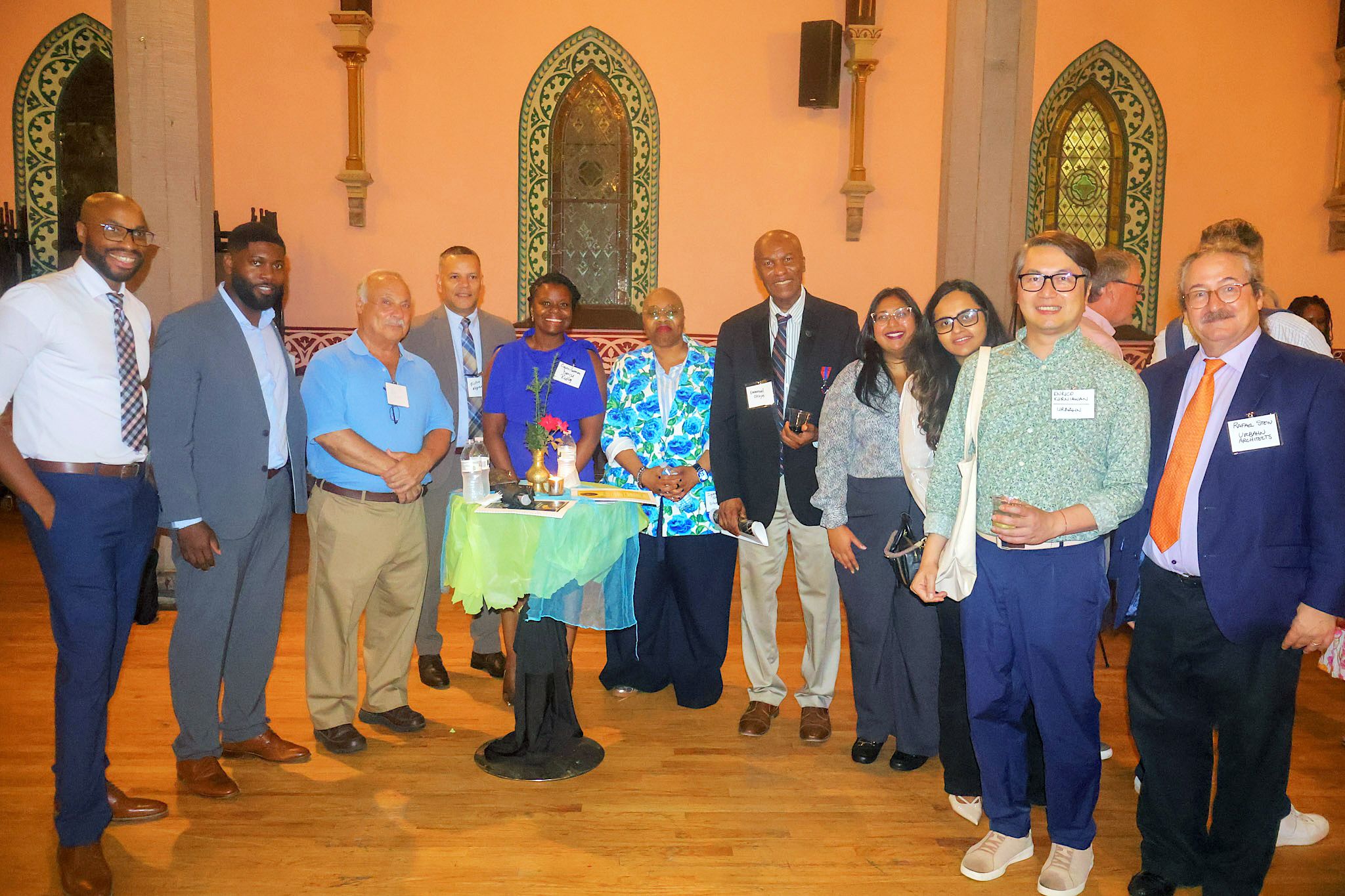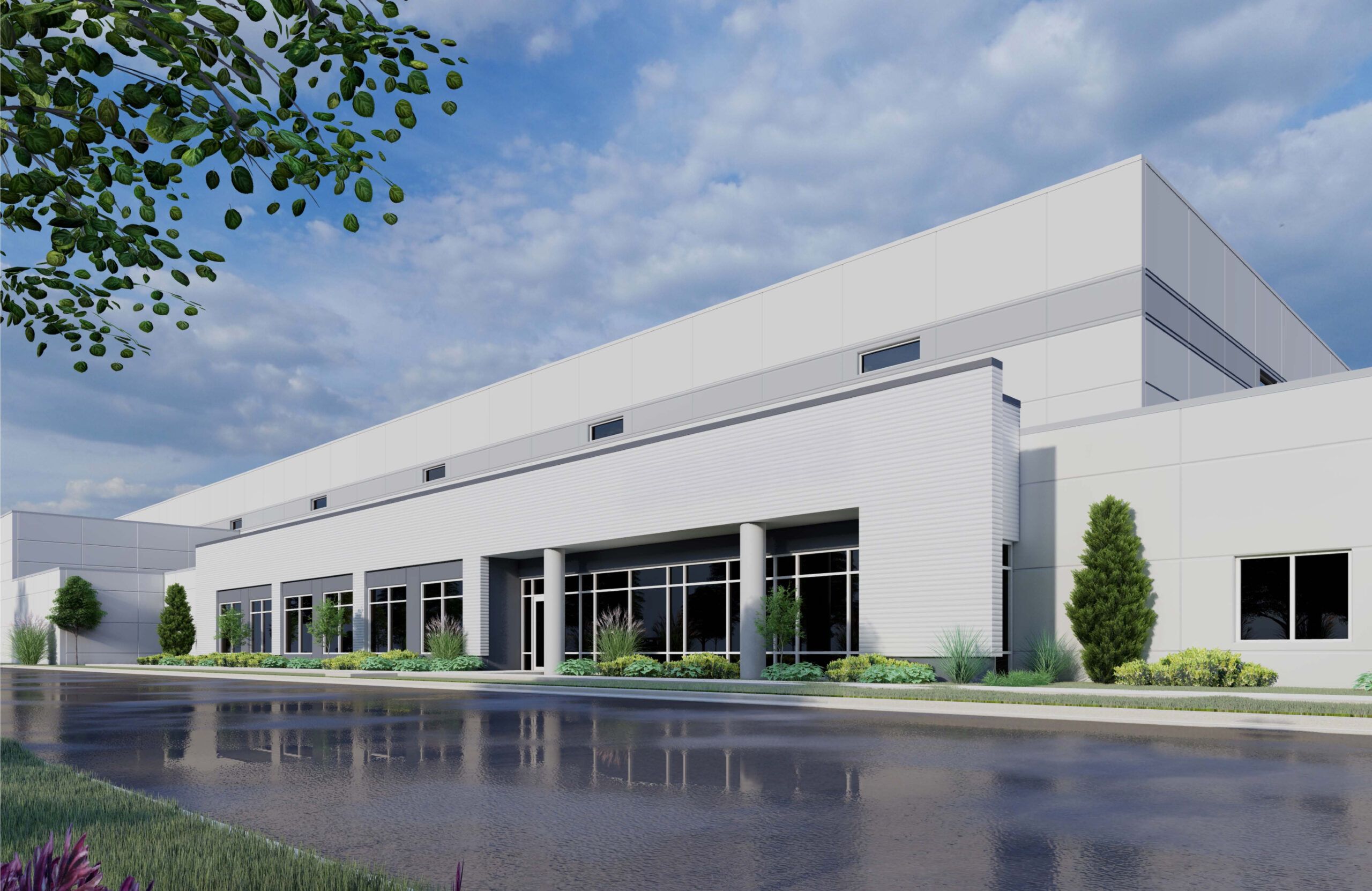Skanska and Cold Spring Harbor Laboratory (CSHL) celebrated the topping out of the Artificial Intelligence and Quantitative Biology (AIQB) building at CSHL. This marks a key milestone of Phase I of CSHL’s Foundations for the Future campaign that aims to invest in the institute’s infrastructure so that research and educational programs are supported to confront scientific challenges ahead.
Skanska is providing construction management services for the $248 million, 379,500-square-foot campus expansion, which, upon completion of this first phase will feature state-of-the-art neuroscience and cancer biology labs, an AI research building and a parking garage.
Phase II of the overall $500 million campaign calls for a new 81,000-square-foot research housing and conference center and a 56,000-square-foot housing and collaborative research center for visiting scientists. Supported, in part, by the New York State Empire State Development (ESD), CSHL is grateful to Governor Hochul and ESD for their investment, which the lab has leveraged with private funds to add new high-paying, high-tech jobs to the local economy.

Substantial completion of the Foundations for the Future campaign initiative will be achieved in early 2027. The CSHL campus is recognized on the National Register of Historic Places.
“We cannot predict the future, but we can prepare for it, and that is what Foundations for the Future does.” says CSHL President and CEO Bruce Stillman, PhD. “The ongoing expansion will help ensure that CSHL remains at the global epicenter of biology research and education for generations. I want to thank our partners at Skanska as well as everyone who has supported this initiative, which has now raised an impressive $425 million.”
“With roots dating back to the 1800s, CSHL continues to exemplify a longstanding commitment to progress, innovation, and building for the future,” says Sean Szatkowski, Executive VP, General Manager, Skanska USA Building. “It’s an honor to aid in carrying the Laboratory’s legacy forward through this transformative seven-acre expansion supporting state-of-the-art research while preserving both the institute’s history and longevity.”
Empire State Development President, CEO and Commissioner Hope Knight says New York’s global leadership in life sciences is anchored by institutions like Cold Spring Harbor Laboratory, a vital contributor to our innovation economy.
With the State’s support, the AIQB Initiative and the Neuroscience Research Complex will accelerate critical research at the intersection of neuroscience, cancer biology and artificial intelligence—fields that will define the next generation of scientific and technological breakthroughs. These projects strengthen Long Island’s research corridor and help translate discoveries into real-world impact, from lifesaving treatments to job-creating startups.”
Empire State Development Board Chairman Kevin Law says the strategic investments represent the very best of Long Island’s research and innovation potential, supporting Cold Spring Harbor Lab’s pioneering work in the field.
“The funding supports hundreds of high-quality jobs, deepens the Lab’s capacity to pioneer advancements in neuroscience and AI, and reinforces Long Island’s reputation as a hub for scientific excellence,” Law says. “ESD is proud to help ensure that groundbreaking research happening right here on Long Island continues to improve lives around the world.”
LIREDC Co-Chairs Linda Armyn, President and CEO at FourLeaf Federal Credit Union, and Dr. Kimberly R. Cline, President of Long Island University, say the region’s innovation ecosystem benefits tremendously from Cold Spring Harbor Laboratory’s essential role.
“We’re proud to support transformative projects that keep Long Island at the forefront of global scientific research,” they said. “The AIQB and Neuroscience Research Complex will not only accelerate medical discovery but also drive economic growth by expanding research capacity, supporting jobs, and attracting new biotech ventures to Long Island.”

The project involves a comprehensive, phased approach with multiple sub-projects progressing concurrently. The scope of operations includes the construction and fit-out of several key facilities: a 36,000-square-foot neuroscience research complex, a 28,000-square-foot Artificial Intelligence and Quantitative Biology research building and a new two-story, 90,000-square-foot parking garage that will provide space for 225 cars is underway, along with the relocation of a campus roadway and existing utility infrastructure, including sewage, natural gas, and other utility lines.
A cornerstone of the overall project is the AIQB, which exemplifies innovation in both cutting-edge scientific research and sustainable construction practices. Researchers will combine CSHL’s strengths in neurobiology, innovative computational systems and circuit neuroscience and the Simons Center for Quantitative Biology to develop advancements in the relatively new field of NeuroAI.
The three-story structure is built using mass timber glulam columns and beams with cross-laminated timber (CLT) floor decks. The timber used in the AIQB was responsibly sourced from sustainably managed forests in the Southeastern United States, and fabrication waste such as sawdust and scrap material was recycled and repurposed for other applications. The $28 million facility will house four laboratories, 15 principal investigator offices, 96 postdoctoral researcher workstations, seven research administration offices, three administrative offices, and 10 meeting rooms.
Empire State Development is supporting the campus expansion with $55 million in funding, including a $25 million grant for the construction of the Artificial Intelligence Quantitative Biology (AIQB) building and a $30 million grant for the Neuroscience Research Complex (NRC). These investments are helping to advance Cold Spring Harbor Laboratory’s leadership in neuroscience, cancer biology, and next-generation artificial intelligence research.
Construction on the expansion project began with the critical reconstruction of the seawall in August of 2020, which was first built in 1850. This project balanced historic preservation with modern resilience and reflected CSHL’s strong commitment to environmental stewardship.
To retain the integrity of the original design, the project team carefully salvaged the historic stone, cutting and repurposing it as a facade for a newly engineered seawall reinforced with a modern structural core. A top priority was strengthening the structure to prevent water intrusion from both the harbor and natural springs. This effort proved successful in 2022, when the new seawall withstood a major storm, demonstrating its effectiveness and long-term reliability.
Skanska and CSHL have collaborated for over five years on a wide range of projects, both on campus and at off-site locations. This has included the construction of Demerec Chemistry Lab and numerous campus-wide upgrades—gut renovations of existing laboratories and housing facilities that included electrical and HVAC system improvements, masonry restoration, and fresh interior finishes. A highlight of their off-campus collaborations is the renovation of the DNA Learning Center NYC at City Tech in Brooklyn, completed in 2021.
This flagship facility, operated by CSHL, serves as a hub for K–12 and adult science education across New York City. It features hands-on genetics exhibits, computer labs, and STEM programs designed to reach underrepresented and resource-poor school districts.
The Center plays a vital role in demystifying molecular biology, linking urban students to CSHL’s main campus, and sparking widespread public interest in DNA science.












